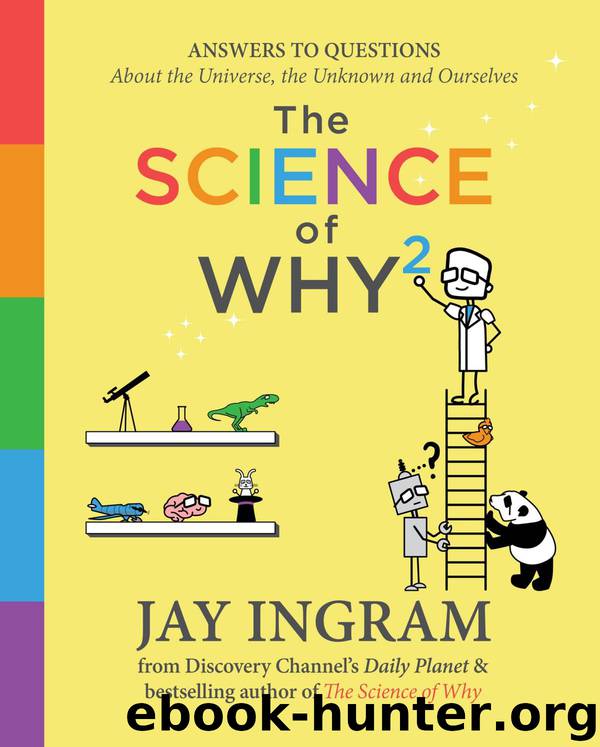The Science of Why 2 by Jay Ingram

Author:Jay Ingram
Language: eng
Format: mobi, epub
Publisher: Simon & Schuster
Published: 0101-01-01T00:00:00+00:00
How can a mongoose survive a cobra’s bite?
IN RUDYARD KIPLING’S Jungle Book, the mongoose Rikki-tikki-tavi realizes, “If I don’t break [the cobra’s] back at the first jump . . . he can still fight.” He looks at the thickness of the cobra’s neck below the hood and knows that’s too much for him and that a bite near the tail would only make the cobra savage. “It must be the head . . . the head above the hood. And, when I am once there, I must not let go.”
Rikki-tikki’s planning a surprise attack, but even so, it’s risky. The venom of a king cobra, for example, can kill a person in half an hour. In fact, the amount in one bite from a king cobra can kill twenty people: it can deliver about a quarter of a shot glass of venom in one strike, more than any other snake. Happily for us, cobras prefer to avoid contact with people; their most common human victims are snake charmers.
And while mongooses are notorious tough guys—sturdily built, low to the ground, hard predators—Rikki-tikki is confident for good reason: he has biochemistry on his side.
The secret lies in the venom and how it works. A king cobra’s venom looks like it was assembled by a fussy yet nasty mixologist: it’s a combination of many different types of venom that target different organs, all in one convenient dose. One of those venoms is common to many species of snakes: alpha neurotoxin. It exerts its deadly effects where nerves meet muscles, but at an ultra-microscopic level, where one molecule comes into contact with another.
Nerves signal muscles to contract. There’s a tiny gap between them, and when an impulse sweeps along the nerve and reaches the end, the nerve releases millions of molecules called neurotransmitters. These drift across the gap—a mere millionth of an inch—and plug into special receptors sitting on the surface of the muscle. Then the muscle contracts.
Once that happens, the transmitter molecules have to be cleared away to allow the process to be repeated. There’s another molecule whose job it is to do that.
If this sequence—nerve impulse, transmitter release, muscle contraction, removal of transmitters—weren’t happening all over your body all the time, you couldn’t breathe, much less move.
Download
This site does not store any files on its server. We only index and link to content provided by other sites. Please contact the content providers to delete copyright contents if any and email us, we'll remove relevant links or contents immediately.
Enlightenment Now: The Case for Reason, Science, Humanism, and Progress by Steven Pinker(6405)
The Immortal Life of Henrietta Lacks by Rebecca Skloot(3826)
A Journey Through Charms and Defence Against the Dark Arts (Harry Potter: A Journey Through…) by Pottermore Publishing(3602)
Elon Musk by Ashlee Vance(3455)
Origin Story: A Big History of Everything by David Christian(3139)
A Journey Through Divination and Astronomy by Publishing Pottermore(3068)
COSMOS by Carl Sagan(2950)
Enlightenment Now by Steven Pinker(2917)
Alchemy and Alchemists by C. J. S. Thompson(2911)
Inferior by Angela Saini(2831)
Bad Pharma by Ben Goldacre(2730)
Shadow of Night by Deborah Harkness(2718)
A Mind For Numbers: How to Excel at Math and Science (Even If You Flunked Algebra) by Barbara Oakley(2691)
Origin Story by David Christian(2683)
Signature in the Cell: DNA and the Evidence for Intelligent Design by Stephen C. Meyer(2501)
A Brief History of Time by Stephen Hawking(2473)
A Journey Through Potions and Herbology (A Journey Through…) by Pottermore Publishing(2434)
The Elements by Theodore Gray(2432)
The End of Faith by Sam Harris(2290)
